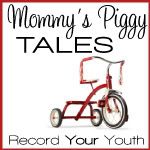Thursday, April 5, 2012
8 Scrapbook Journaling Tips
What’s in a scrapbook story?
Journaling in a scrapbook is an excellent way to turn memories into an engaging story that will last forever. To fill out your story, consider using the questions that newspapers answer in their articles:
1. Who?
• Who was involved in the event you are telling about? Be sure to provide first and last names of each person so you can remember them years later.
• Include details: When you describe the people in your photos, your words come alive so your reader can imagine being right there, too.
2. What?
• What is the main event you’re describing?
• Describe what happened in a sequence that gives shape to the story: what were you (or the main characters) doing in the pictures? Go through the events to paint a complete picture of what happened.
• What did you like best about the event?
3. Where?
• Where did the event happen? Give enough details so the reader can picture the setting and share your excitement.
• What was the importance of the location to your story?
4. When?
• When did the event happen? Include details like the time of year, the specific occasion, or which trip/vacation you are showing.
• Don’t assume your readers will know (or you will remember) the timing of the event. Describe it in detail. When something happened may be as important as the event itself.
5. Why?
• Why was this event important to you?
• What did you or others learn from it?
• Explain what the experience meant to you. Did it change the way you/they looked at anything?
Spice Up Your Writing
6. The power of words
Think about how many memories are triggered by the five senses. You may have been on vacation and have some fond memories of the trip. But start remembering the taste of foods you ate, or the smells and sounds of cooking breakfast over a campfire, and you’ll be transported back so that every detail springs to life. Using the right words, you can make stories sound “good enough to eat.”
7. Juicy words
Use juicy(!) words to make the story come alive! There is absolutely nothing wrong with using everyday adjectives like big or little. But sometimes you’ll want to stretch your imagination and come up with more stimulating words like humongous or teensy. Choose descriptive details to make them more interesting. Make each story pop for your readers. Think about the difference between a dull sentence and a juicy sentence in a book or story you like. Which would you rather read?
8. Using the five senses
What do you think about when you smell the aroma of apple pie baking? Does it remind you of Grandma’s house? There are many words related to the five senses that will help you describe those memories and help your reader experience them, too. One easy way to describe things in more detail is to use the five senses for a kick-start.
Sensory words relate to your five senses (smell, taste, sight, touch and hearing) and they can be used throughout your writing. They can be very powerful when you want to describe an event in detail. Remember that you want your readers to “see” (and hear, touch, etc.) what you are telling in words.
For more ideas on preserving your memories, check out my website, where you can sign up for a free monthly newsletter: www.bethlamie.com.
Subscribe to:
Post Comments (Atom)






No comments:
Post a Comment